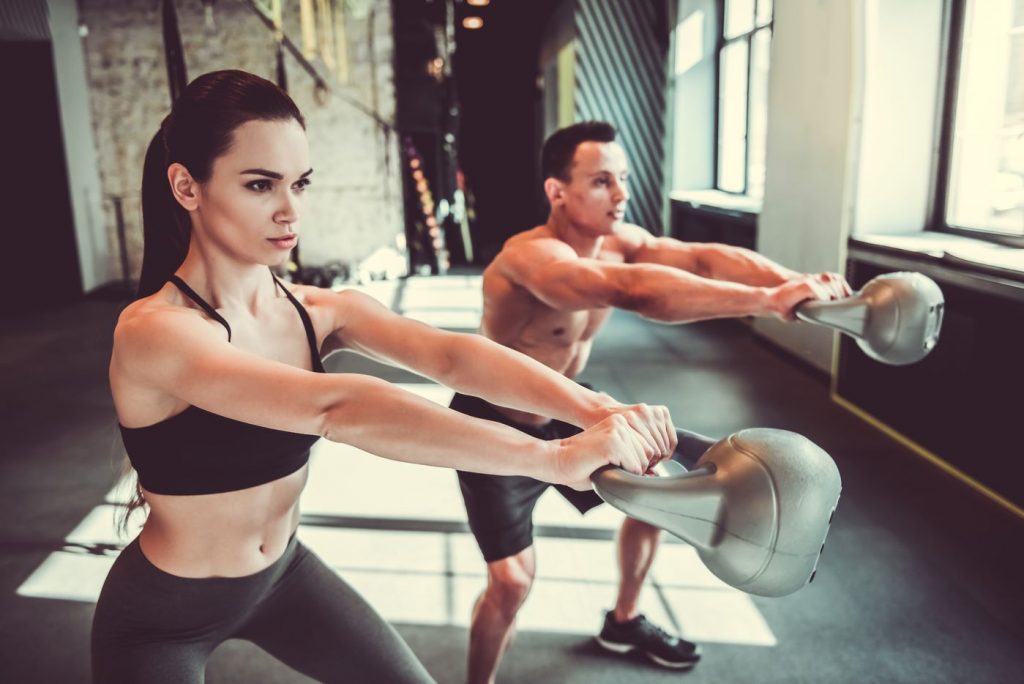How much exercise should you do according to your age?

Daily doses of physical exercise have been proven to contrast a number of aging factors as stress, obesity, heart disease, diabetes. And the longer you are physically active, the less you will notice getting older.

When you are in your 20s, your body is strong and resilient. This is the perfect time to build a foundation of fitness. Develop physical activity as a habit. Make it a regular part of your life. That will make it easier to keep it up as you get older. Play sports with friends, such as tennis or football.
Go hiking or biking. Your options are endless. Remember also that, as you age, you lose muscle and bone strength. So be sure to include strength training as part of your routine now. Aim to include 30 minutes of weight training followed by 30 minutes of cardio 3 times a week, plus 45 to 60 minutes of straight cardio (running, walking) 2 or 3 times a week. One day of rest.
With the 30s, you start noticing that weight doesn’t come off quite as easily as it used to. This is because after age 20, your basal metabolism drops by 1 to 2 percent every decade, and as lean muscle decreases and body fat increases, you don’t need as many calories to sustain yourself. That makes weight training especially important during this time.
Join a gym and start lifting weights. Our bones start to weaken as we get older, too. This is a good time to start focusing on bone strengthening. Make sure weight-bearing exercises are part of your routine. In this decade, experts agree, keeping fit means working harder. We recommend one hour of circuit training 4 times a week, plus at least one day of cardio for 45 to 60 minutes at a high intensity. Take one day off.
This is the time of your life when it is most important to have an exercise routine. Our bodies naturally start to decline in middle age. Our muscles begin to lose mass and elasticity. This slows our metabolism and makes it easier to gain weight. During this time, both men and women start experiencing dropping hormone levels.
This also makes it easier to gain weight, especially around the abdomen. This kind of weight increases your risk of developing health problems. Physical activity is the best way to fight all these changes. We suggest one hour of weight training 3 days a week, plus 45 minutes of cardio five days a week. Take one day off.
In your 50s, you may start to experience more aches and pains on a daily basis. Don’t let this stop you from exercising. Just adapt your exercise program. Low-impact activities such as walking, biking, or swimming generally go easy on your joints. You may also be even sorer after vigorous workouts. Try reducing the intensity and exercise more often instead.
During this time, you’ll also have to fight your body’s natural tendency to curve forward. Strengthen your core by focusing on the muscles in your abdomen and your back. This will help your body stand up straighter and fight the curve. We recommend 4 to 6 cardio sessions a week, 20 to 40 minutes each, with an intensity that lets you answer a simple question but not chat, plus half an hour of weight training twice a week. Always stretch afterward.
This is the time when you can start focusing on preventing falls. Continue your aerobic exercise regimen. Try to get 30 minutes of activity 5 times a week. Lift weights or use resistance training 2 to 3 times a week to keep muscles and bones strong. And start working on balance, stretching and balance are absolute musts at that age. We recommend daily exercises to help you improve and maintain your balance. Many yoga or Pilates classes have a heavy stretch component, making them perfect for the body that needs to maintain its flexibility to avoid balance problems later on.
In your 70s and beyond, you need to maintain your strength and flexibility. This will give you more years of being able to function and be independent. Continue getting aerobic activity every week, whether it be water aerobics, walking, or dancing. Use resistance bands to keep muscles strong. Continue doing balance exercises to keep from falling. Devote extra time to warming up and cooling down so you don’t hurt your muscles. And remember to stretch every day to maintain your flexibility.
